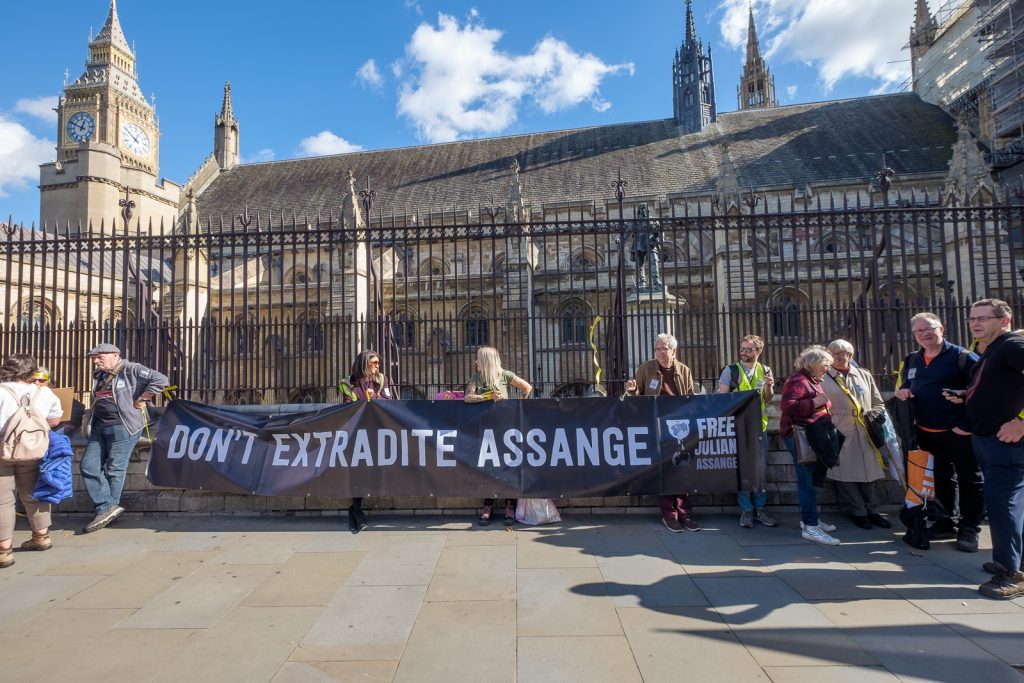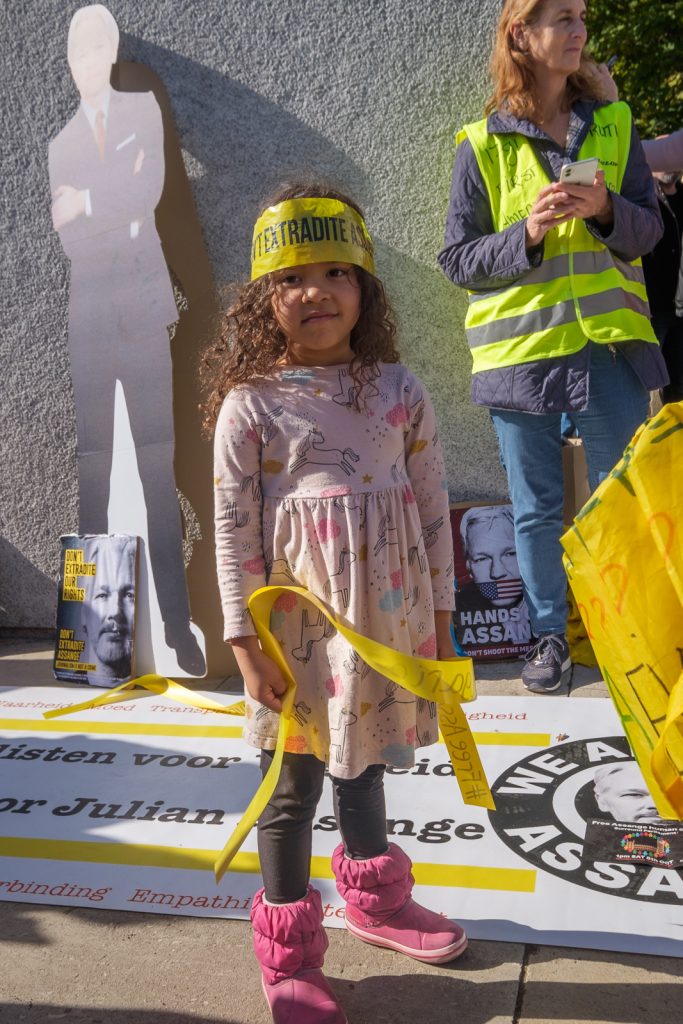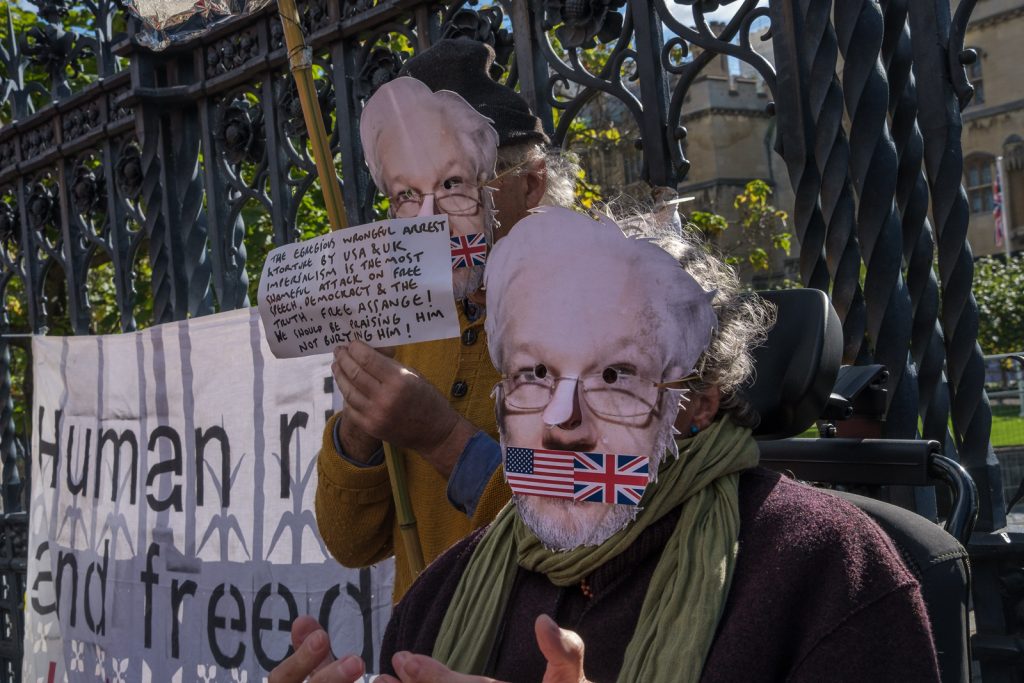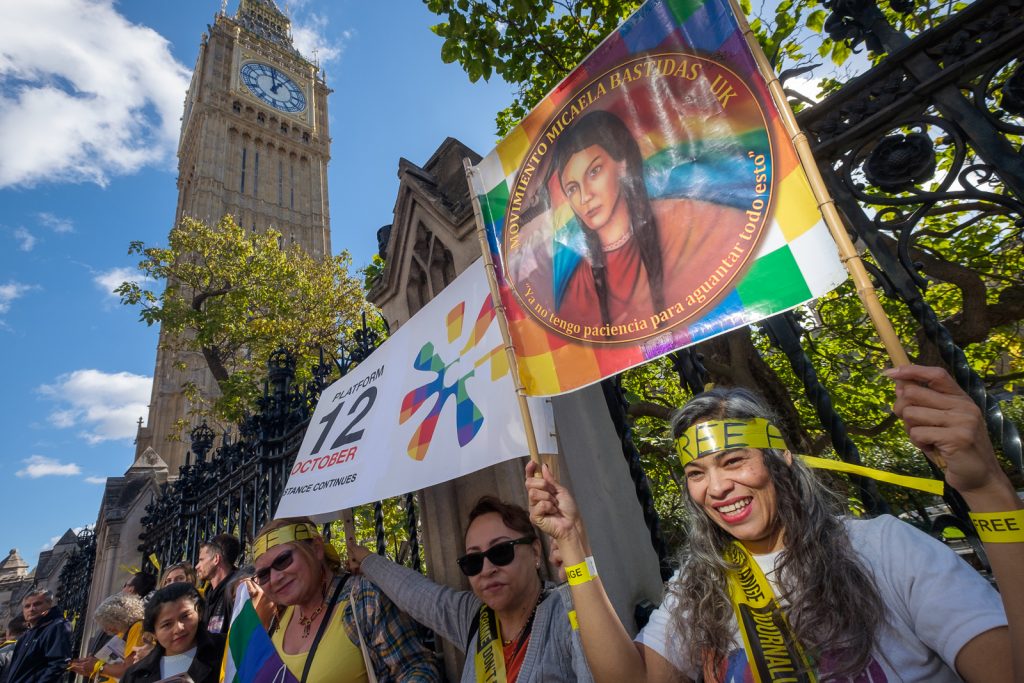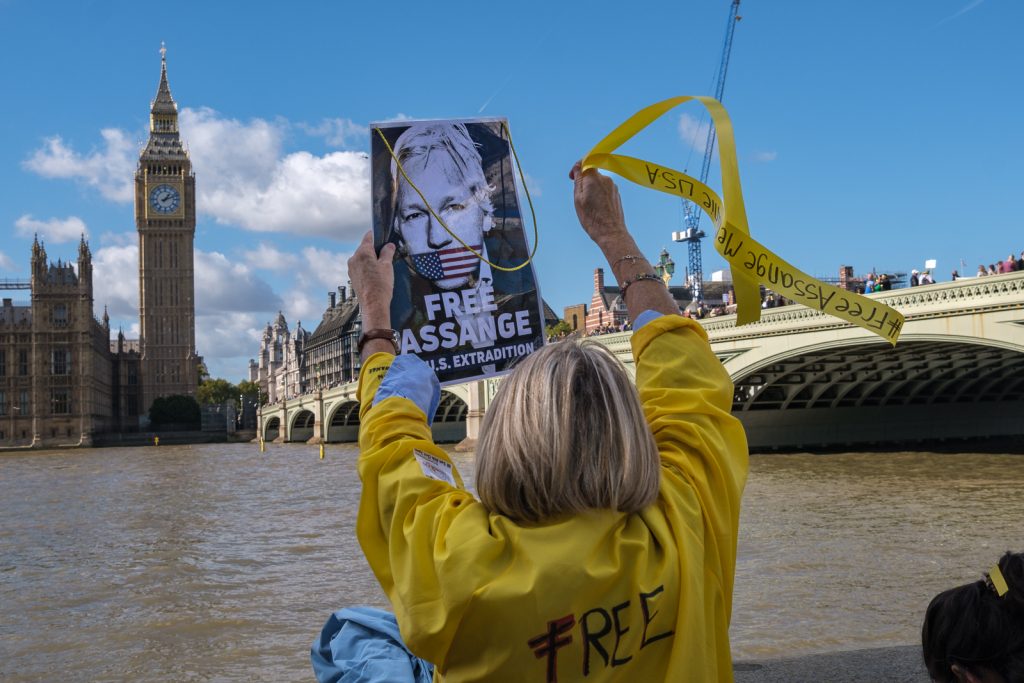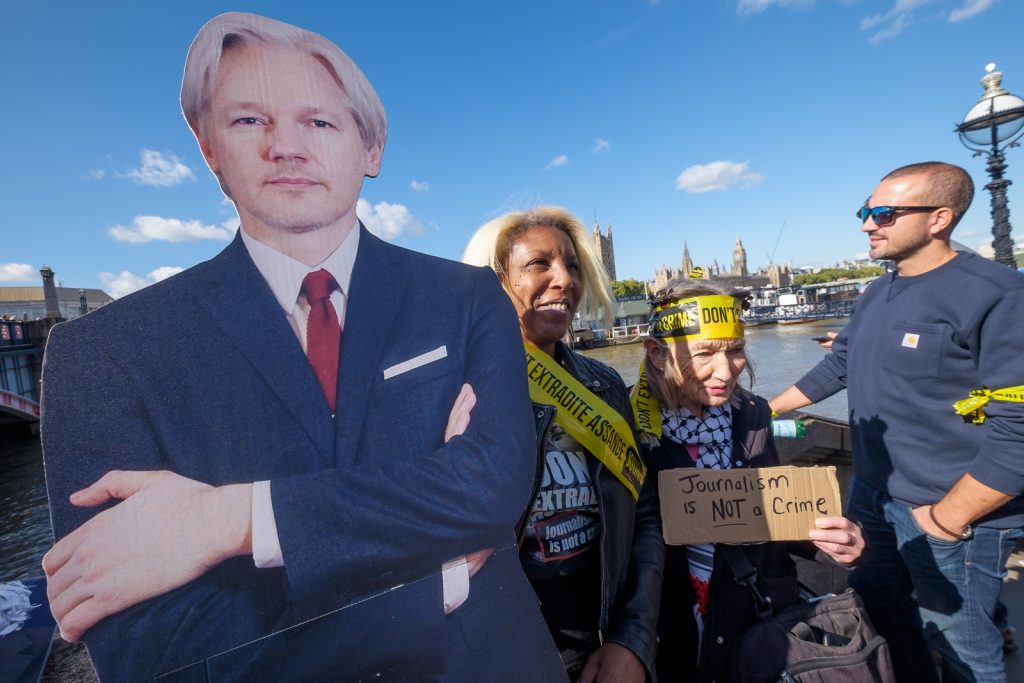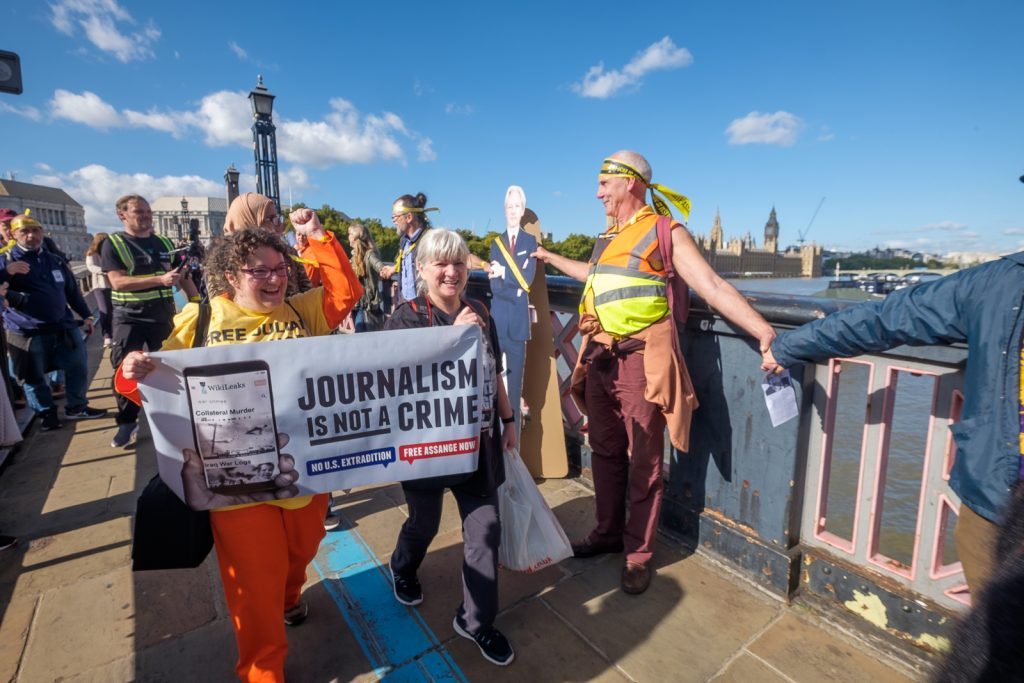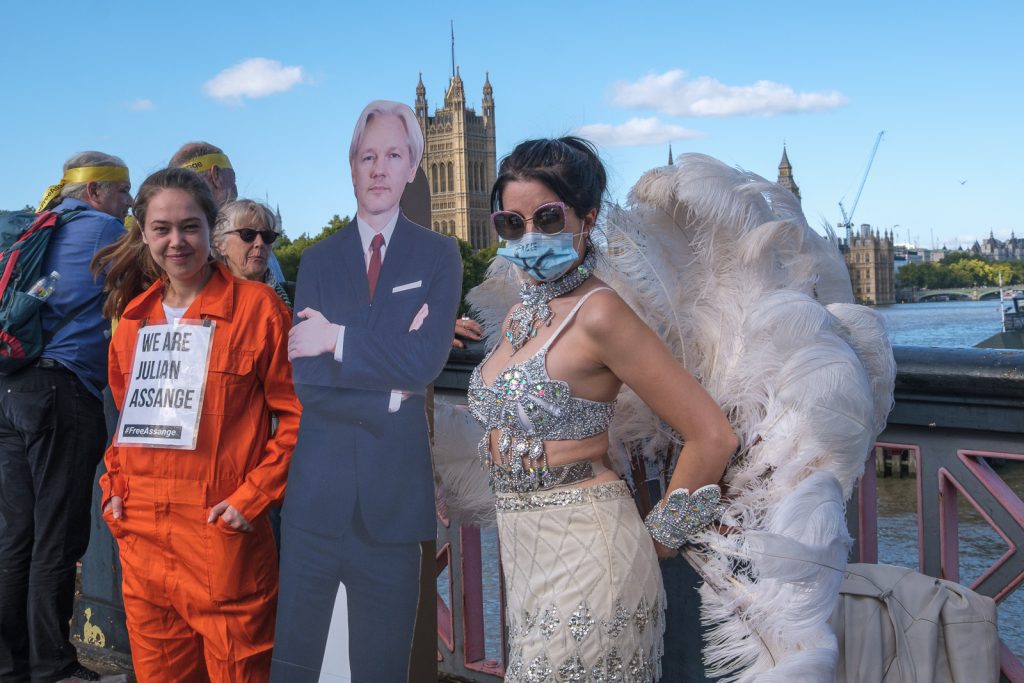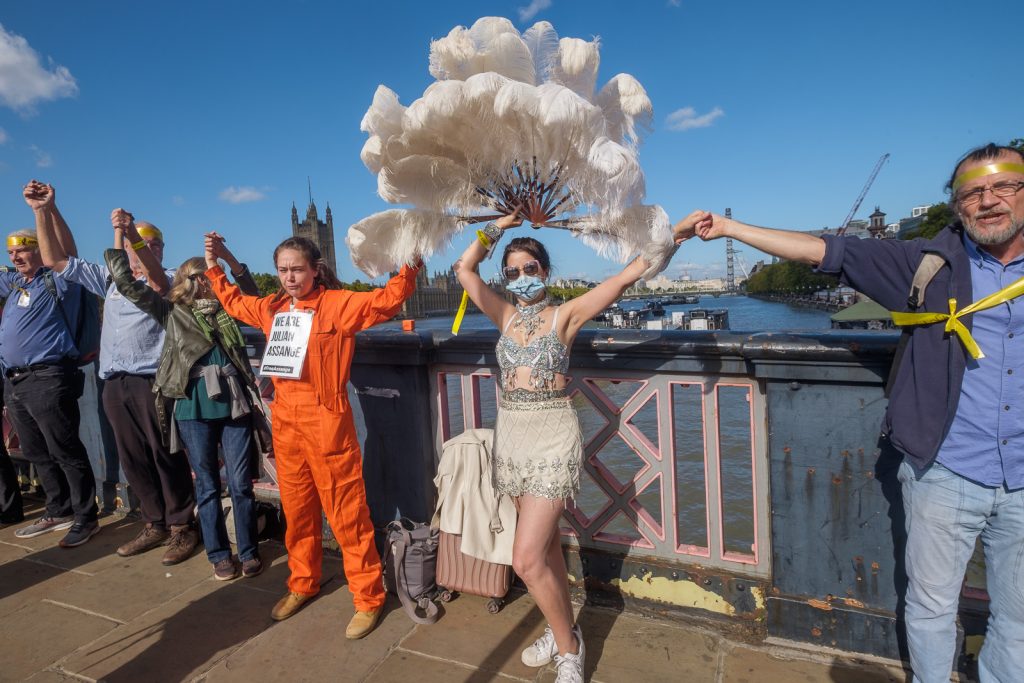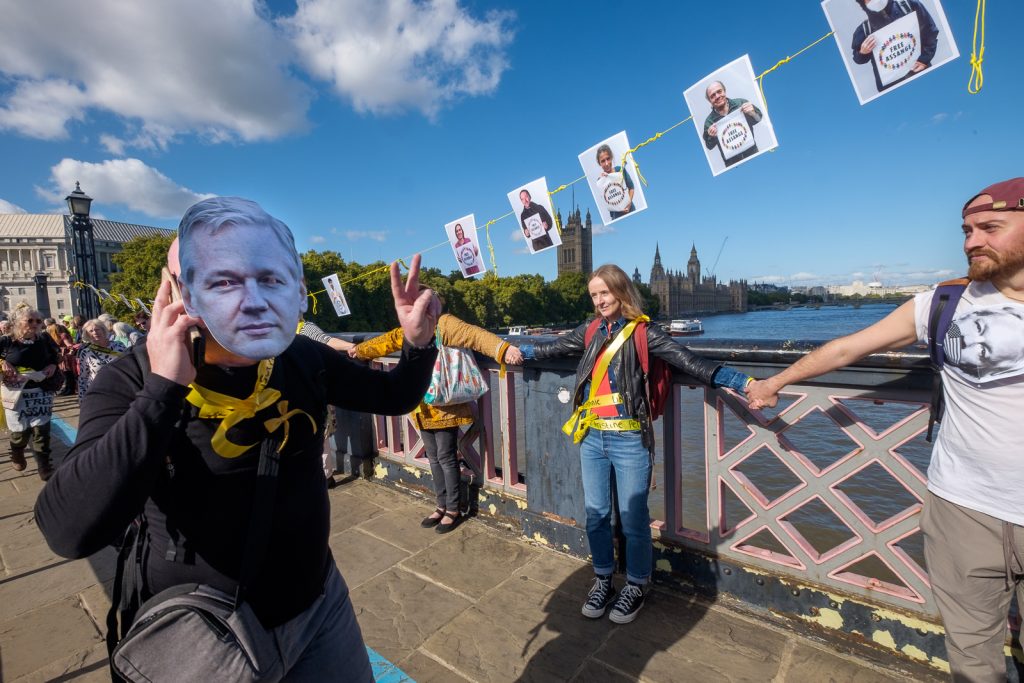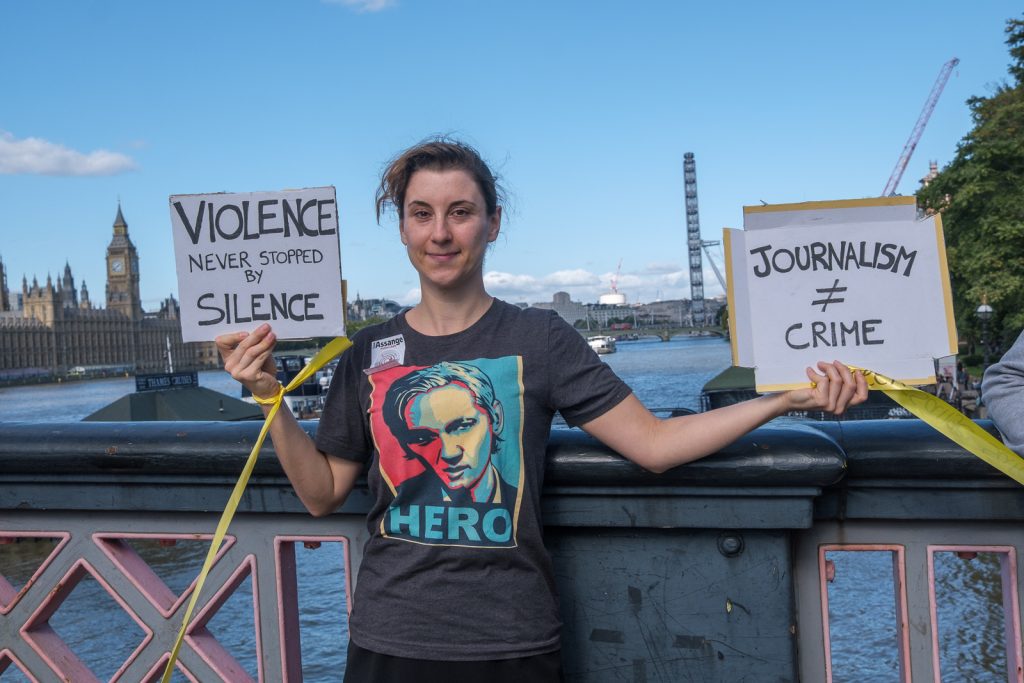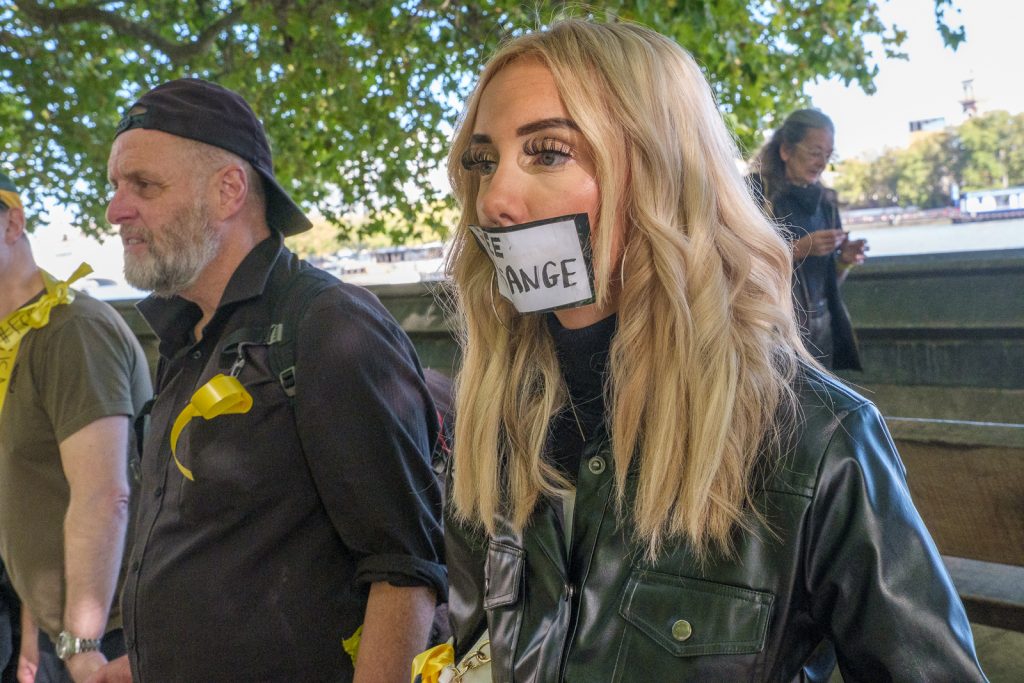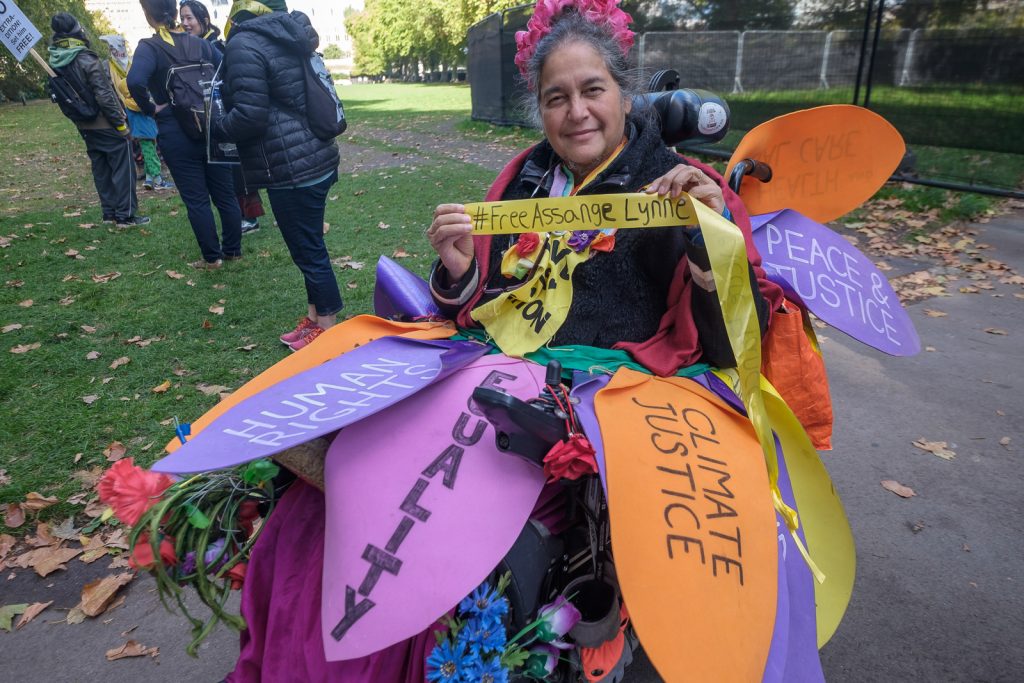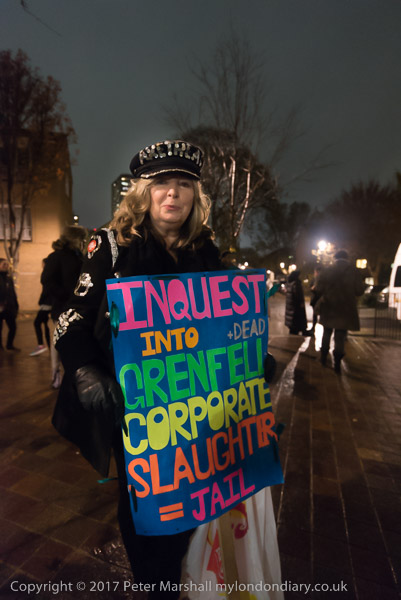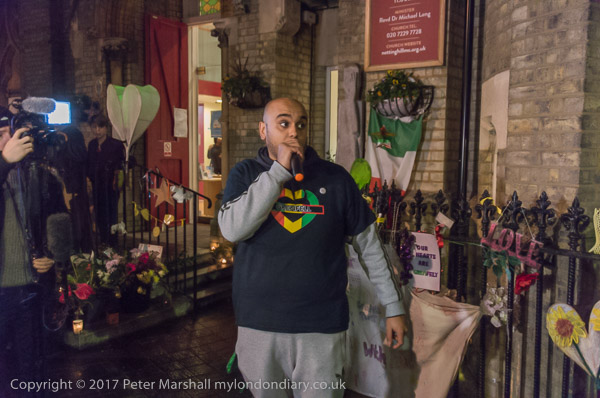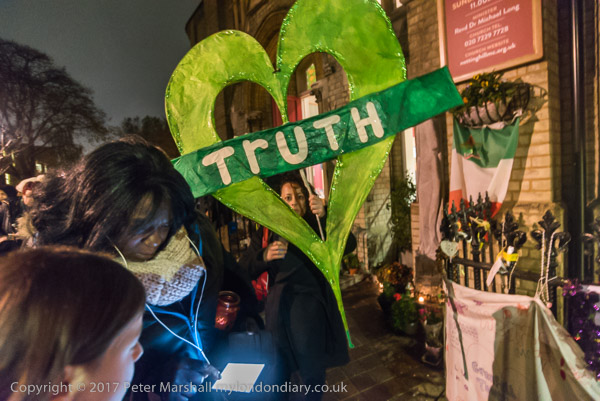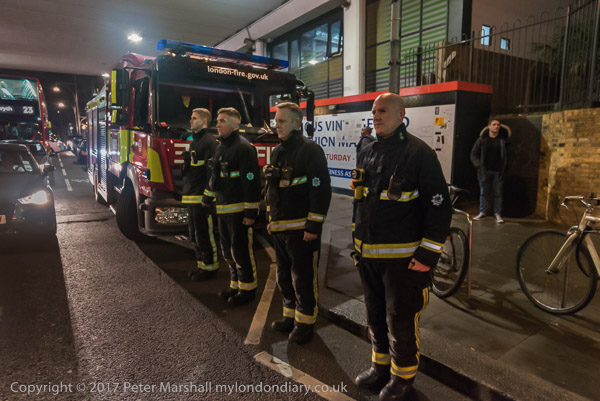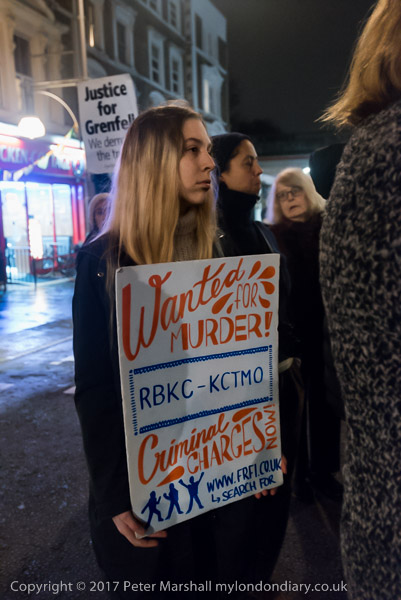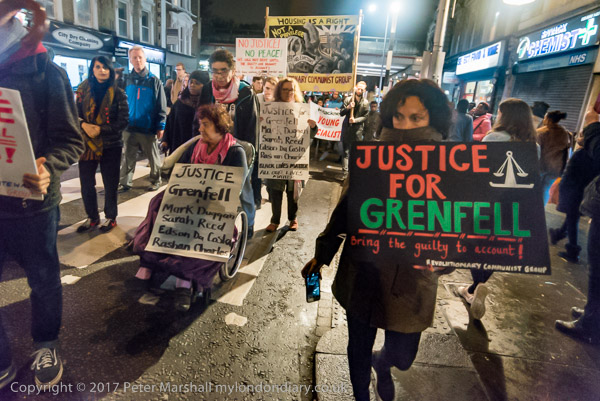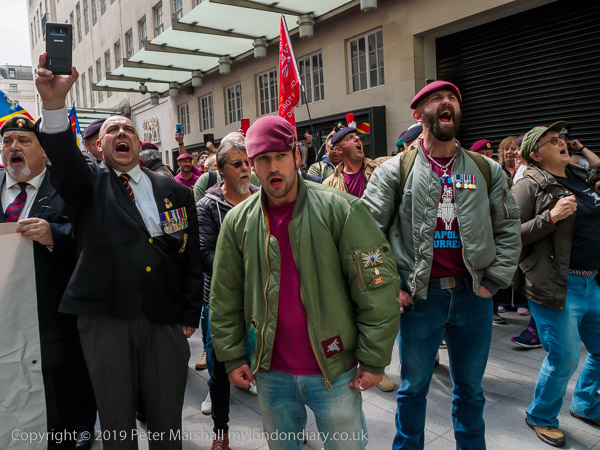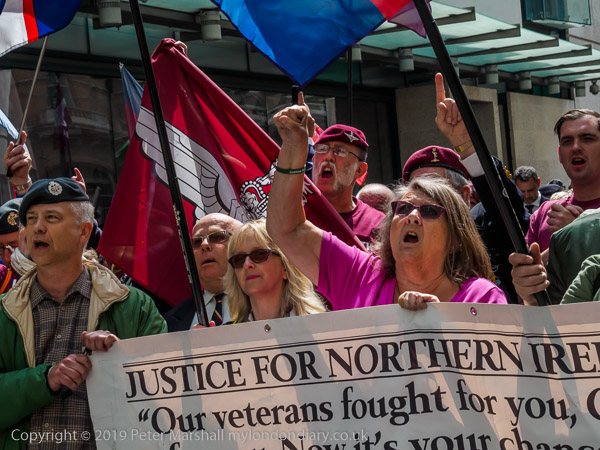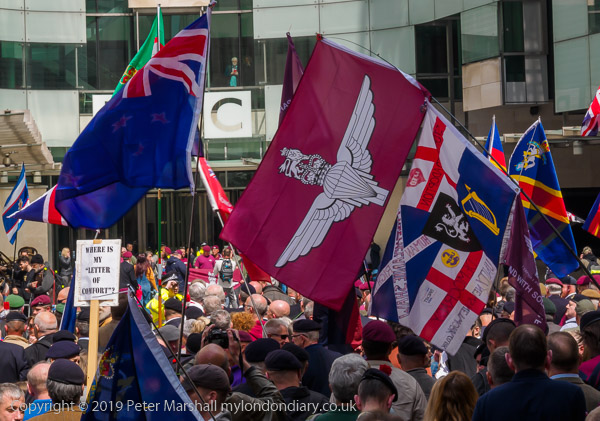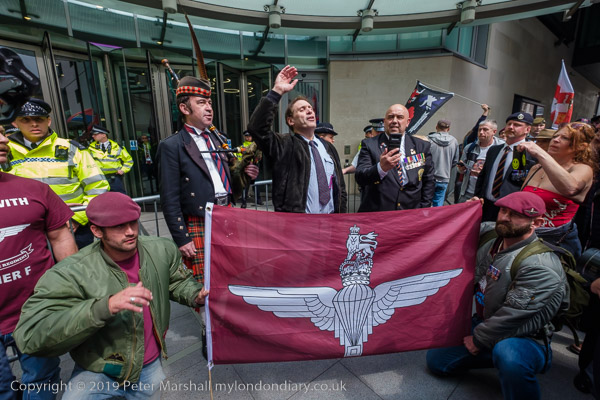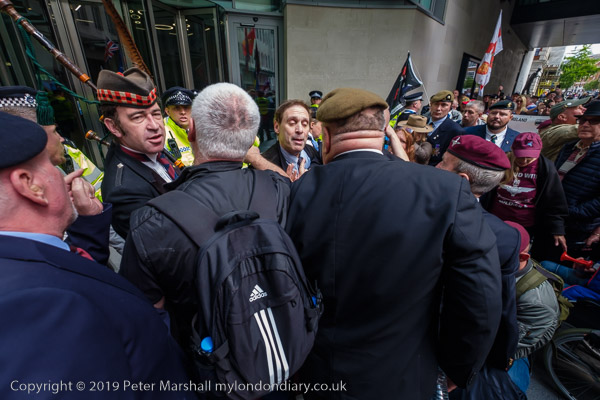Four unrelated events kept me busy on Friday 6th December 2013.
EDL Protest Supports Marine A – Downing St, Friday 6th December 2013
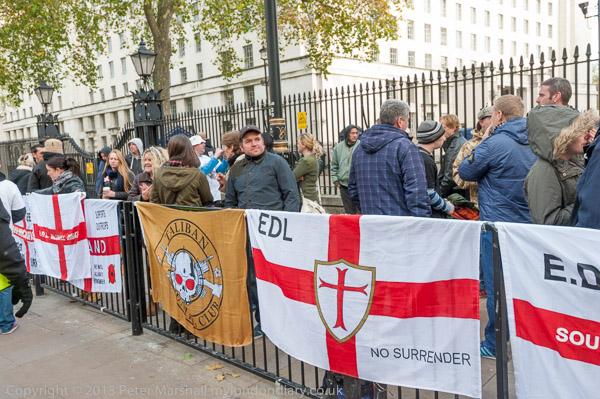
In November 2014, a court martial found Marine A, Sergeant Alexander Blackman guilty of murder for his killing of a wounded Taliban insurgent in Helmand Province, Afghanistan. On the day his sentence was due to be announced the extreme right-wing EDL called a protest opposite Downing St, calling for a minimal sentence, arguing that he acted under extreme pressure and that his victim was a terrorist.
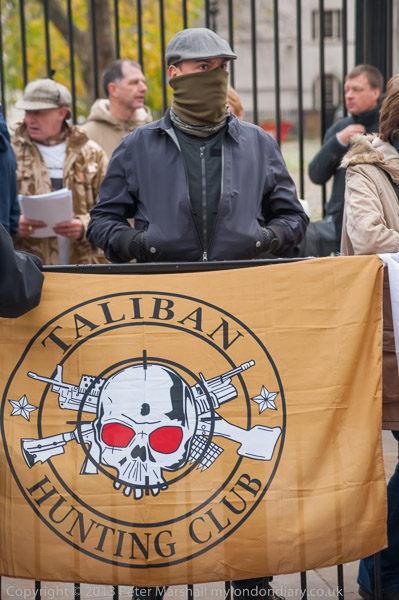
Although the EDL had predicted 500 would come, only fewer than 50 were there when I came to take photographs, and there were no placards and little to tell people why they were there, just the usual EDL flags, some with the message ‘No Surrender’, though quite a few of those taking part were wearing ‘I support Marine S’ t-shirts. Among the flags was one for the ‘Taliban Hunting Club’, with a skull with red eyes inside a gunsight and crossed guns, which seemed in particularly poor taste for this event.
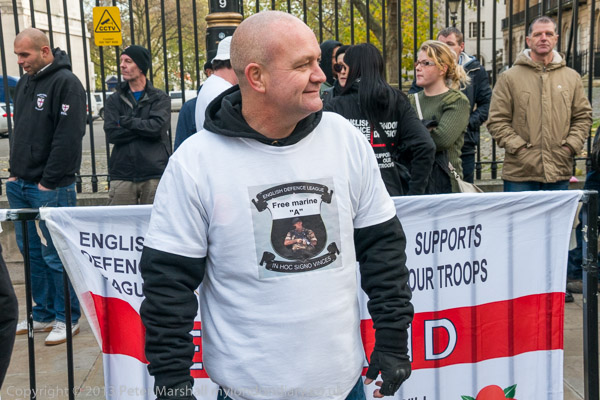
The Geneva convention which Blackman said at the time of the killing he had just broken is an important protection for serving soldiers and many of them had strongly condemned the cold-blooded killing of a prisoner by Marine A and called for an appropriate sentence.
Later in the day Blackman was given a life sentence with a minimum of 10 years. Later this was reduced to 8 years, and after an appeal in 2017 the murder verdict was reduced to manslaughter on the grounds of diminished responsibility with a prison sentence of 7 years, though his dismissal with disgrace from the Marines remained in place. There had been a large public campaign calling for his release or a more lenient sentence and a general feeling that his initial trial had been unfair, with his commanding officer not being allowed to give evidence and a generally poor performance by his defence team. He was released from prison the following month having served sufficient time.
Tributes to Mandela – London, Friday 6th December 2013
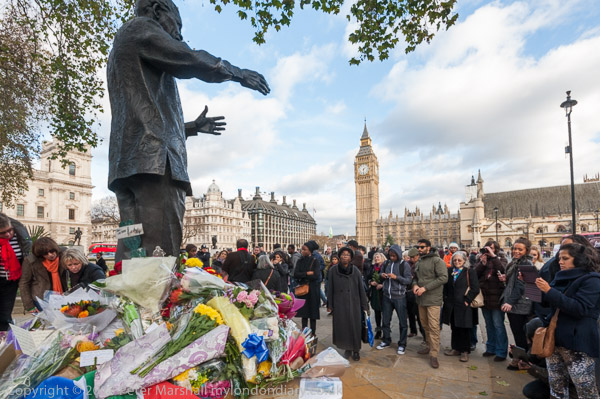
Nelson Mandela died in Johannesburg on the previous day, Thursday 5th December, and people brought flowers to the Nelson Mandela statue in Parliament Square.
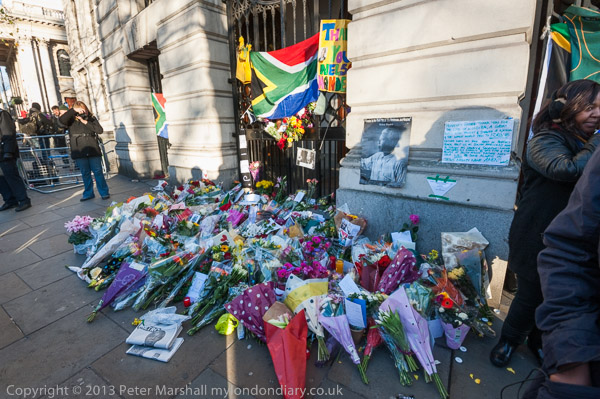
There were more flowers at South Africa House in Trafalgar Square, where a long queue waited patiently for several hours to sign a book of remembrance in the High Commission.
Bereaved protest at CPS Failure – Southwark Bridge, Friday 6th December 2013
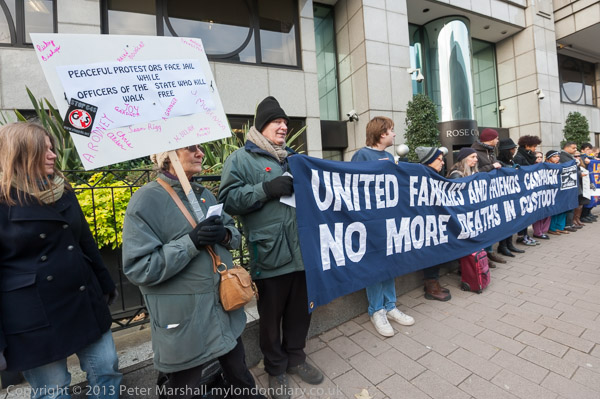
Families whose loved ones have died in custody held a protest outside the offices of the Crown Prosecution Service in Rose Court at their failure to successfully prosecute police officers and others over these deaths. Since 1990 there have been 1433 deaths and not a single conviction.
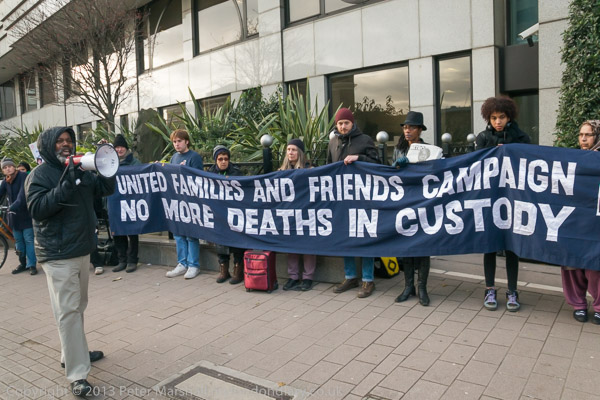
The last successful prosecution brought against a police officer was for involvement in a black death in custody was in 1972, after the death of David Oluwale in 1969. Police officers have been prosecuted for several other black deaths in custody – Joy Gardner, Christopher Alder and Mikey Powell – but none of these cases was successful.
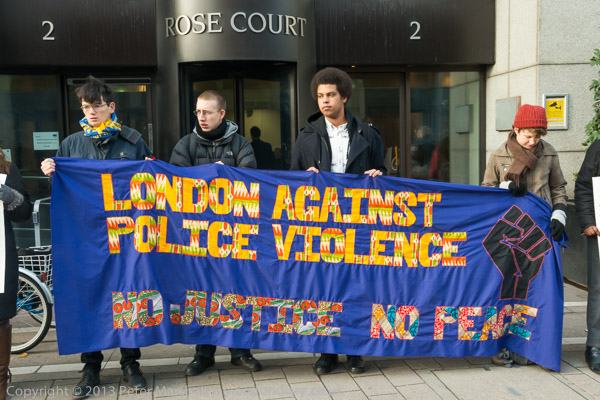
The standard response given by the CPS for not bringing prosecutions is that there is ‘not enough evidence to prosecute’. The reason is often that police hide or destroy evidence and fail to carry out any proper investigation of these cases from the start, failing to treat them as a crime but more as something to be covered up. Often the officers responsible for the deaths are are simply not questioned, and in some cases they refuse to answer questions. CCTV evidence is often not available with equipment problems being cited, and officers have often falsified their evidence to protect themselves or their colleagues.
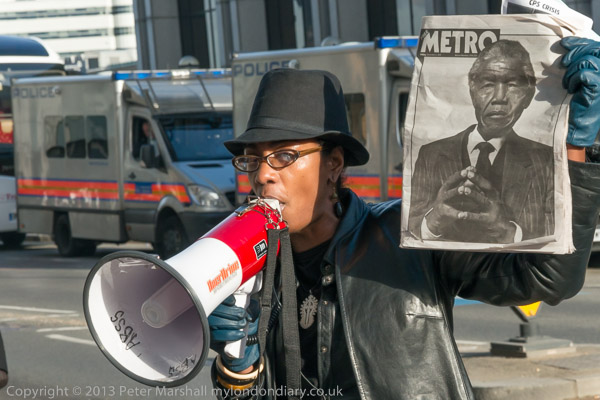
Among those who spoke was Marcia Rigg, whose brother Sean Rigg was murdered in Brixton Police Station in 2008. She began her speech with a tribute to Mandela. An inquest the previous year had concluded that the police had used “unsuitable and unnecessary force” on Rigg, that officers failed to uphold his basic rights and that the failings of the police “more than minimally” contributed to his death.
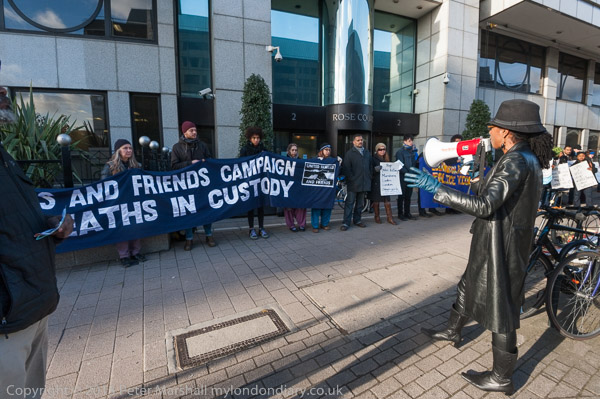
In March 2013 three police officers were arrested who had clearly committed perjury at the inquest but the CPS decided not to charge them. Later after a review forced by the family one was charged but despite the evidence was unanimously acquitted by the jury in 2016.
More at Bereaved protest at CPS Failures.
‘Cops Off Campus’ Protest Police Brutality – Bloomsbury, Friday 6th December 2013
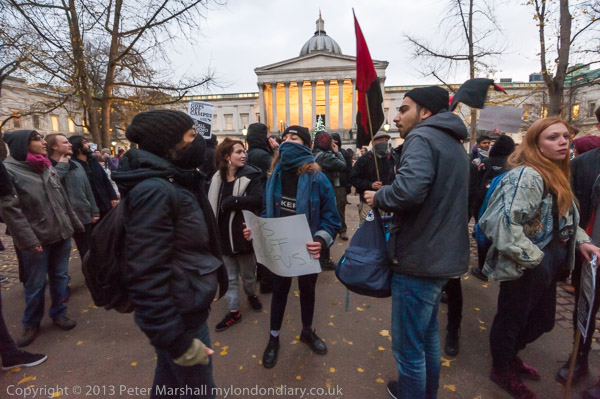
London University management was trying to ban all protests on the campus and had called in police the previous day when students had occupied part of the Senate House. Police appear to have used excessive force in removing the students and on Friday 6th a large group of students had come out to protest against them and the University calling police onto the campus.
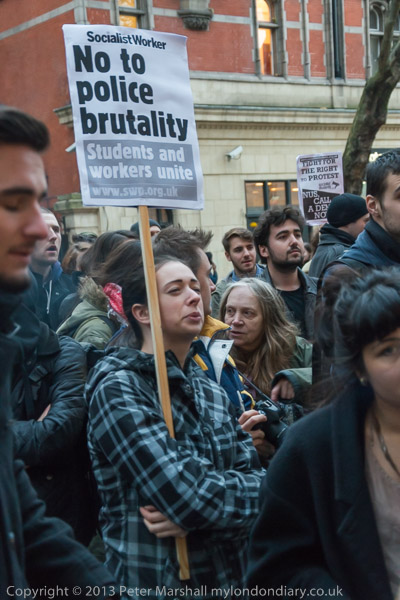
The previous day’s protest had been over the privatisation of student fees, but there were other issues, including the university’s intention to close down the student union, seen as a part of their aim to end all protests. Students have also been taking the side of low paid staff who work in the universityy, particularly the cleaners, security and catering staff and supporting their campaigns for a living wage, proper sick pay, holidays and pensions which they are denied as their work is outsourced. It was largely protests over this that had led the university management to try and ban all protests.
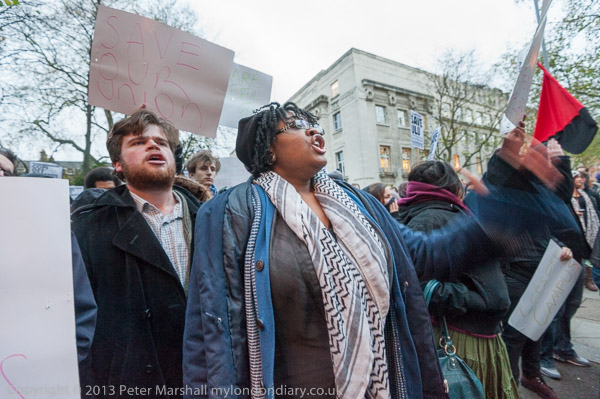
Today’s student protest was intended to be an entirely peaceful and orderly march around some of the various sites of the university in the area to the west and north of Russell Square, but the police had come apparently determined to stop them, with police vans down every side street.
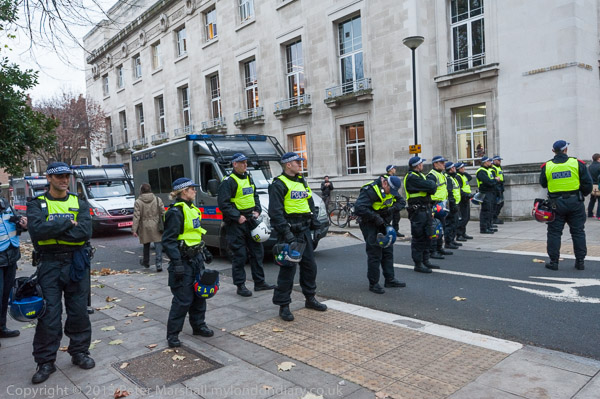
There were a few short speeches outside the University of London Union and then the students marched to the locked gates of Senate House and shouted slogans. When they attempted to move off to march around the block their path was blocked by police, with a few students who tried to go past being thrown roughly backwards. The students wanted to keep the protest peaceful – there were many more than enough of them to have pushed their way through had they wished to.
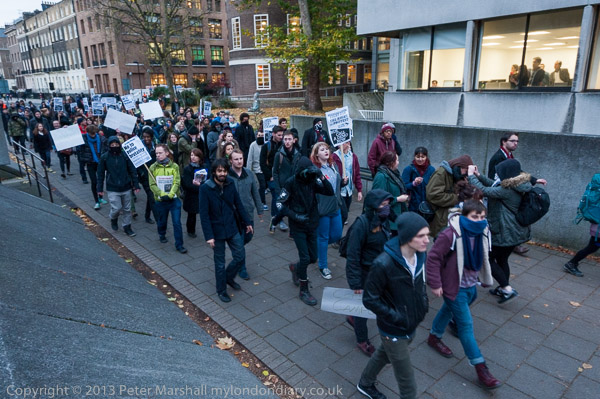
Behind them at the other end of Malet Street was another line of police, with more blocking the only side-turning away from the campus. The only route free was onto the campus and the walked past SIAS and out onto Thornhaugh St, where they turned left to Woburn Square and on to Torrington Place. Here they found the gate to UCL was locked and guarded by security. They turned into Gower Street, saw more police coming up behind them and rushed into UCL. After a short time there they decided to make their way by the back streets to Torrington Square and the student union. I’d had enough walking and took a more direct route, meeting them as they arrived back. It was getting rather dark and I’d done enough walking and I then left to catch a bus on my way home.
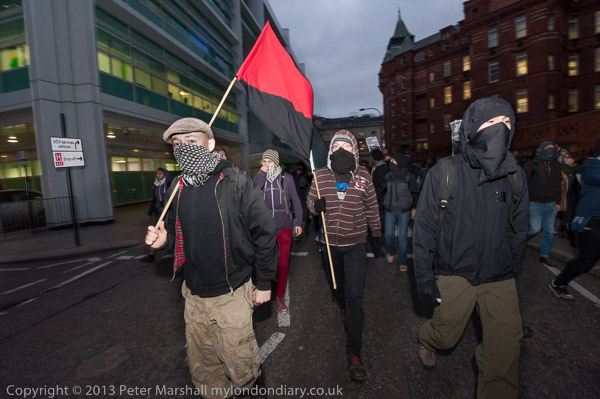
I could see no reason for the way that the police had reacted to a peaceful march around the University; it seemed to be simply trying to show the students who was boss by preventing what appeared to be a peaceful protest, and a reaction which created considerably more disruption in the area than the protest itself as well as representing a terrible waste of public funds. But I’m sure some of the police were grateful for some extra overtime with Christmas coming up.
More at ‘Cops Off Campus’ Protest Police Brutality.
